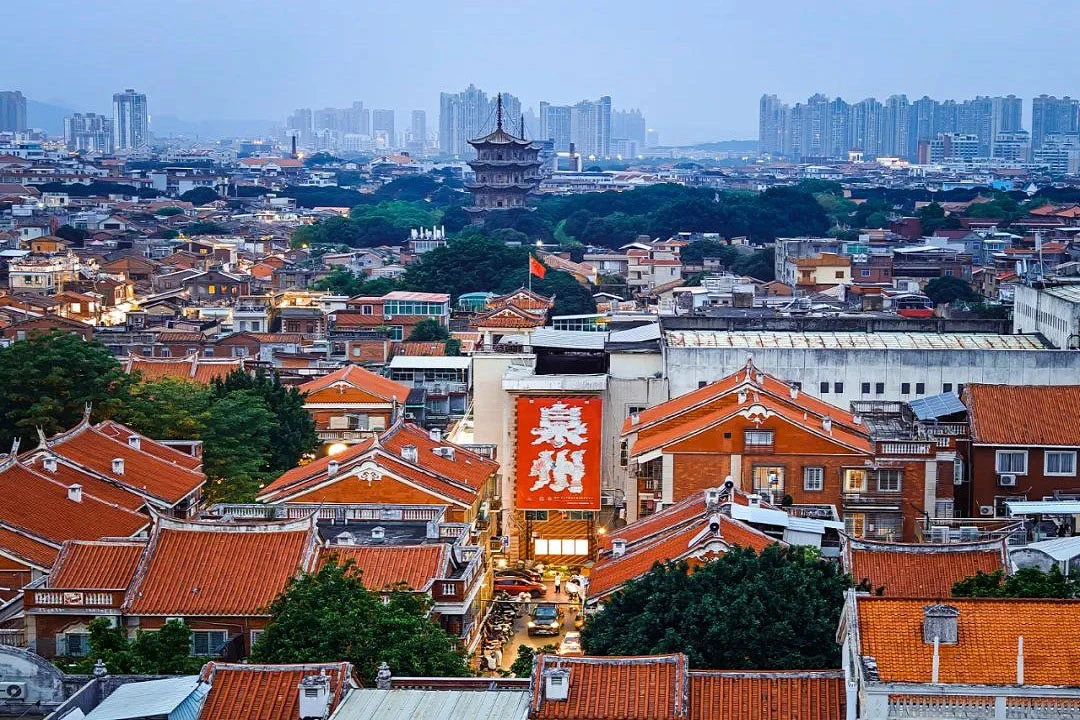Quanzhou, once the largest port during the Song and Yuan dynasties and the starting point of the Maritime Silk Road, holds a significant position in China's grand history of transportation and commercial civilization. As we celebrate the third anniversary of Quanzhou's inclusion in the UNESCO World Heritage list as "Quanzhou: Emporium of the World in Song-Yuan China," the fourth episode of "The Way of the Great Country" revisits this ancient city. This exploration not only brings to life the bustling scenes of the ancient port but also showcases the modern narrative of this international harbor.
A Historical Harbor of Global Importance
In the twelfth year of the Yuan dynasty, the Italian traveler Marco Polo arrived at Quanzhou port. In his travelogue, he remarked, "If a single ship loaded with pepper arrives at any port, here in Citong Port (modern-day Quanzhou), there would be hundreds of such ships." His exaggerated descriptions reflect his awe at the thriving trade in Quanzhou. Recently, another Italian merchant, Jacopo's notes from the Yuan dynasty were discovered, which contained over 300,000 words praising Quanzhou as the "City of Light." This account complements Marco Polo's observations beautifully.
Quanzhou has indeed earned such high praise. Historically known as " Citong City (刺桐城)" or "Li City (鲤城)," its streets are lined with flamboyant fire-red coral trees, giving the city a vibrant hue. The city's shape, resembling a swimming carp, symbolizes its grand commercial spirit as its merchant ships ventured across the world.

The Geographic Marvel of Quanzhou
Late Ming dynasty geographer Gu Zuyu described Quanzhou's strategic location succinctly: "The prefecture relies on mountains for its defense, dominates the sea, borders the Wu Kingdom in the north, and is closely linked with Lingnan (岭南) in the west." Nestled between mountains and the sea, Quanzhou's largest river, the Jinjiang River, flows from the Daiyun Mountains, eventually merging into the vast East China Sea at Quanzhou Bay, creating a natural, sheltered harbor.
"Quanzhou Bay has a long coastline, deep waters capable of accommodating large vessels, and provides a natural refuge from storms," says renowned writer Cai Chongda in the series. These natural advantages fostered Quanzhou's commercial prosperity, attracting merchants from distant lands. Situated far from the political struggles of central China and benefiting from its mountainous terrain and maritime convenience, Quanzhou became a popular destination for migrants, especially during periods of political turmoil in the late Han, late Tang, and Song dynasties.
By the late Tang dynasty, the influx of people significantly expanded Quanzhou from a small town to a major southeastern hub. During the Song dynasty, Quanzhou had over 200,000 households, a third of which were "guest households" (客丁). Limited by its agricultural capacity, Quanzhou's residents turned to the vast ocean, pioneering world-leading maritime technology.
A Maritime Technological Leap
In the Quanzhou Maritime Museum, a Song dynasty ship quietly narrates the story of this technological leap. "It has numerous compartments, each isolated by watertight bulkheads," explains deputy curator Lin Han. This "watertight bulkhead technology" significantly enhanced the ship's safety, allowing it to withstand collisions with only minor water ingress in individual compartments, thus preventing catastrophic damage. This technology was later applied to China's first domestically-built polar research icebreaker, Xuelong 2. This ancient "black technology" continues to aid humanity in exploring distant polar regions.
A Confluence of Eastern and Western Goods
The rapid development of maritime technology greatly increased the success rate of long voyages, establishing Quanzhou as a renowned international port. The medieval Moroccan traveler Ibn Battuta recorded the bustling scene at Quanzhou port, noting "hundreds of large sea ships and countless smaller vessels" filled with goods from all over the world, along with thrilling tales of ocean adventures.
Early in the Northern Song dynasty, the Six Victories Pagoda was built at Citong Port port as the first lighthouse on the Maritime Silk Road. Together with the Southern Song dynasty's Gusao Pagoda, these became Quanzhou's most famous navigational landmarks. "Foreign sailors and merchants arriving in China would sing and dance upon sighting the Six Victories Pagoda, celebrating their impending arrival in Quanzhou," says Cai Chongda.
During these voyages, commercial activities from over seventy countries converged, gradually forming the Maritime Silk Road. In the fourteenth year of the Yongle reign of the Ming dynasty, Zheng He set sail from Quanzhou on his fifth voyage, reaching new heights in maritime trade.
Countless spices, gems, and even valuable crops were brought to China through Quanzhou, leading to a culinary transformation. In the late Ming and early Qing dynasties, a fiery red plant from Quanzhou became widely cultivated as an ornamental and medicinal plant. However, it was in Yunnan, Guizhou, and Sichuan where people discovered its spicy flavor, making it a valuable substitute for the scarce salt. This plant was none other than the chili pepper, now a staple in Sichuan cuisine.
The Aesthetic Revolution of "Chinese White"
The Maritime Silk Road not only enriched China's material wealth but also sparked an aesthetic revolution worldwide. In the thirteenth century, Marco Polo first encountered Dehua white porcelain in Quanzhou and was immediately captivated by its flawless, translucent beauty, likening it to the luster of natural shells. Upon returning to Venice, he introduced this "shell porcelain" extensively in his travelogue, bringing a white porcelain jar back with him.
Marco Polo's promotion ignited a centuries-long craze for Chinese porcelain in Europe. Countless merchants sailed to Quanzhou to bring back shiploads of Dehua white porcelain for European royalty. British King George IV owned fifteen white porcelain candlesticks, and Saxon Elector Augustus II collected 150 lion-shaped water droppers from Dehua, treating them as prized possessions.
Ancient Culture Revitalized in Modern Times
Quanzhou's rich cultural heritage from a millennium ago remains vibrantly alive today. These ancient traditions have found new life and relevance in the modern era. Take for example the Nanyin music, which has been passed down since the Han Dynasty and is now a key element in the popular "Guochao" trend of traditional and ancient-style music. Recognized as a UNESCO Intangible Cultural Heritage, Nanyin's melodious tunes continue to resonate, bridging the gap between past and present.
Another fascinating aspect is the resurgence of the "Zan Hua Wei (簪花围)" tradition. Originating as a style of hairpin worn by ancient Quanzhou women, this intangible cultural heritage has sparked a wave of "hairpin fever" among tourists. Visitors flock to Quanzhou to experience this tradition firsthand, turning it into a contemporary cultural phenomenon.
In the grand narrative of a nation, the paths of the past, present, and future intertwine. In Quanzhou, these paths converge, offering a profound sense of continuity and progress. As we journey through these ancient routes, we witness the harmonious coexistence of old and new. As we raise our glasses to this timeless journey, we toast not only to the past but to the promising horizons that lie ahead.



